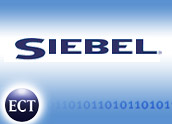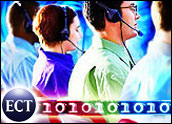
American businesses are struggling with retaining experienced customer service agents as demands and contacts increase along with higher expectations in the customer-driven economy. At the same time, the marching orders to the contact centers are to keep costs down, reduce call time, increase satisfaction rates and up-sell, that is, get customers to buy more profitable products and services.
The offshore solution to customer service does not always work, especially for high-priority, high-touch customers. Among other problems, cultural differences, dissimilar lifestyle and language nuances can irritate the customer and threaten branding.
Another solution — telecommuting customer service agents — is being increasingly adopted, and technological advances through Web services architecture, telephony, multimedia, high-speed connectivity and myriad of other capabilities have literally brought the concept up to speed.
High Churn Rate
Companies spend up to $15,000 to add a new call center agent to their staff, with an average retention of six months and a 40 percent annual churn. In comparison, a virtual-contact center using telecommuting customer service agents can provide high quality personnel with an annual turnover rate at or below 10 percent, Elio Evangelista, senior analyst for research and consulting firm Cutting Edge Information, told CRM Buyer.
“Three percent of the U.S. population works in call centers,” Evangelista notes. As a result, competition for the best and seasoned customer service representatives (CSR) is fierce. “Telecommuting is becoming more of an option as technology is improved. You can create a virtual call center. With telecommute you can recruit at the national level,” Evangelista pointed out.
For the new CSR, the pressure is constant and the burnout frequent they succumb to the nonstop deluge of dissatisfied, occasionally angry callers. For many, it is not a career but, rather, a temporary “McJob.”
But technological offerings are now at a level that makes telecommuting — with its cost-savings for the company and benefits for the worker — a real alternative.
Linked Through Technology
“Basically, all the tools that are available in a facility are also available in a remote environment.” Tim Houlne, CEO for remote agent call center service provider Working Solution, told CRM Buyer. “The information available to the remote CSR has no limitations,” he added.
Linkage to and from all segments, from the data centers to the CSR, is accomplished through virtual private networks (VPNs), intranets, and/or the Internet.
Training is done online remotely and/or on site, usually using the same methods and modules used in a brick and mortar call center.
The real beauty of the virtual telecommute model is in the attraction and retention of experienced CSRs.
Quality of Life
Michael Amigoni, COO for insurance and financial services outsourcing provider ARO, told CRM Buyer, “Of 10 workers, the telecommuter model has nine seasoned, the traditional brick and mortar model has two.” Both ARO and Working Solutions have an annual turnover rate at or below 7 percent.
For the CSR it is much more a quality of life issue, says Evangelista. “We found that the more convenience and benefits you offer the CSR, the more that you improve your turnover rate.” The savings alone in the expenses of commuting to work translates to a “$4,000 annual pay increase,” not to mention the time saved in travel, he said.
Costs inherent in a brick and mortar call center are greatly alleviated when agents telecommute, with savings reportedly translating up to 30 percent. Evangelista said that the flexibility for businesses that have seasonal fluctuations magnifies the financial benefits. “If you have to expand the call center, expanding the building is not your best option,” he said.
Catherine Nesbitt, Director, Customer Relations for the American Heart Association has witnessed tremendous results with telecommuting. “Virtual CSR’s reduce the cost of service by streamlining overhead by close to 60 percent,” she said. She explained that, “Cost savings are achieved by decreased attrition, increased agent satisfaction and higher rates of productivity. At first I was concerned that virtual agents would create more headaches now I know they save them.”

















































